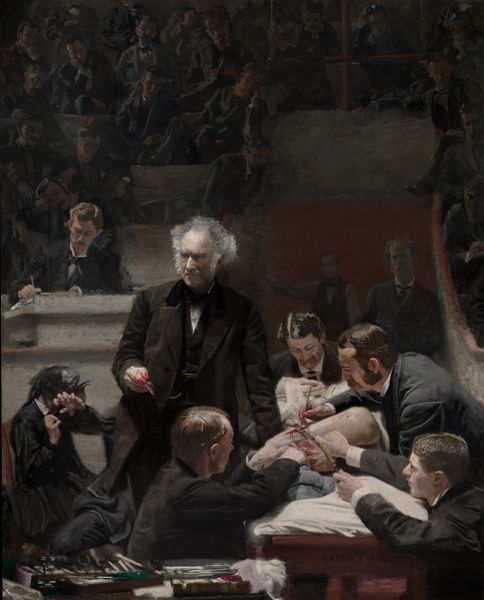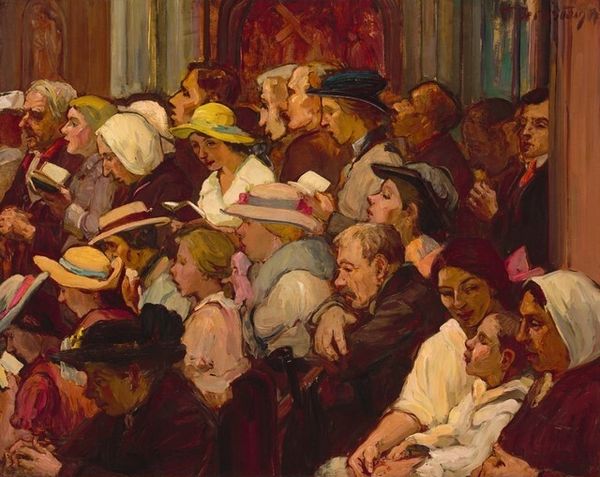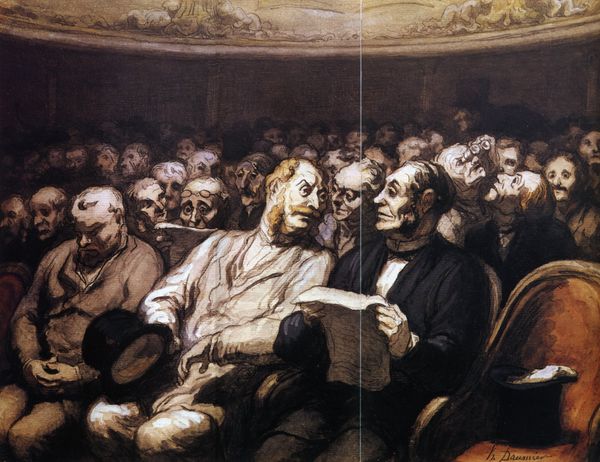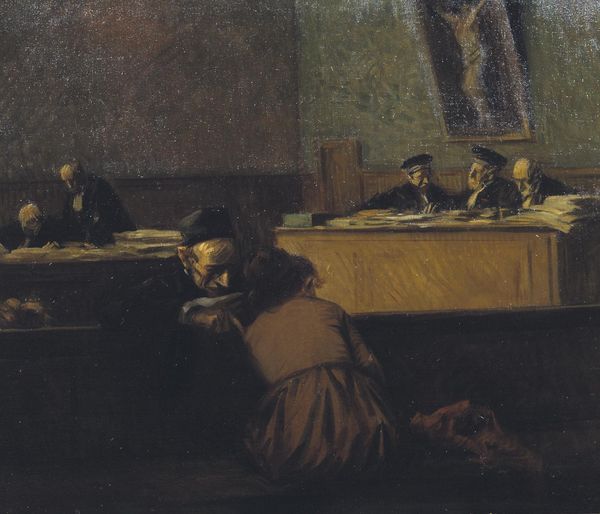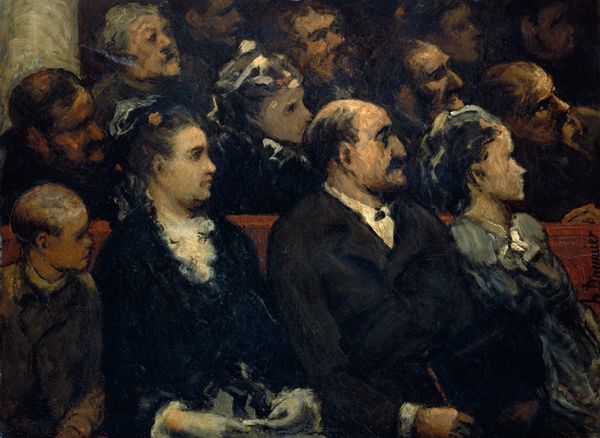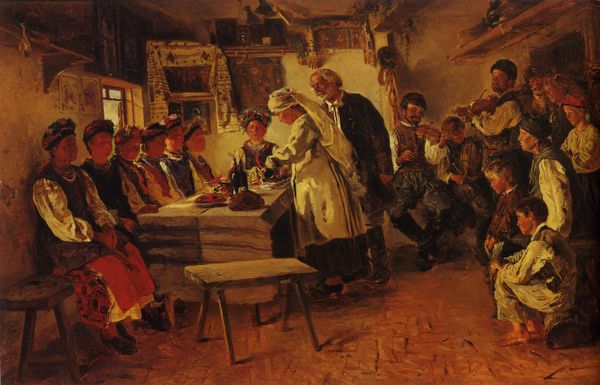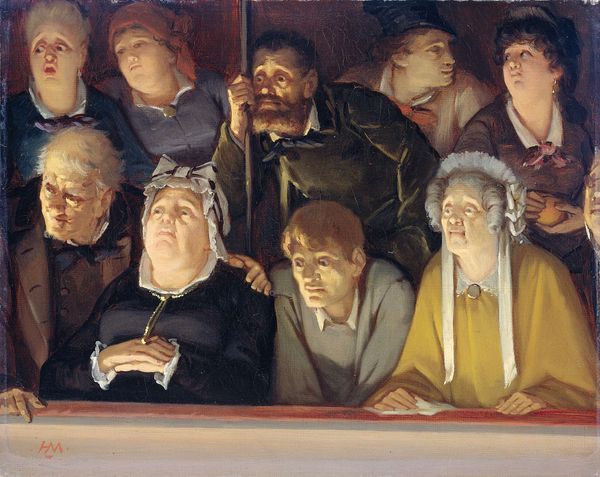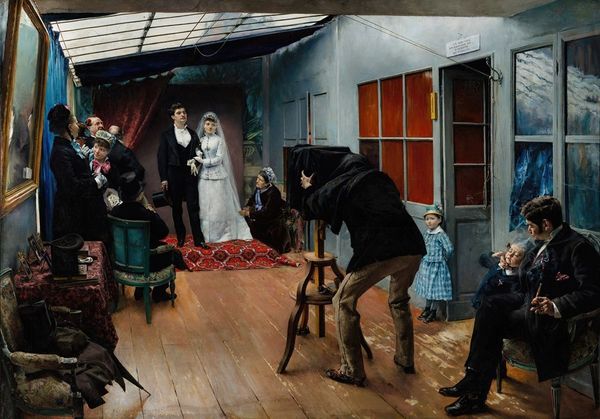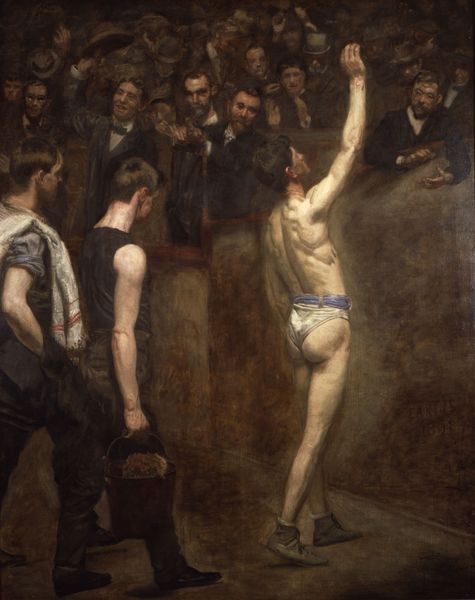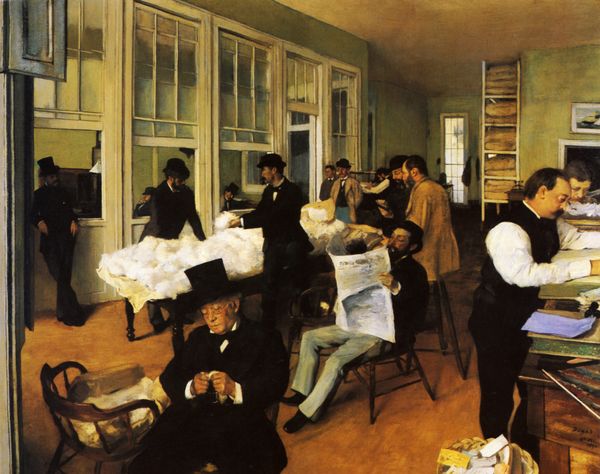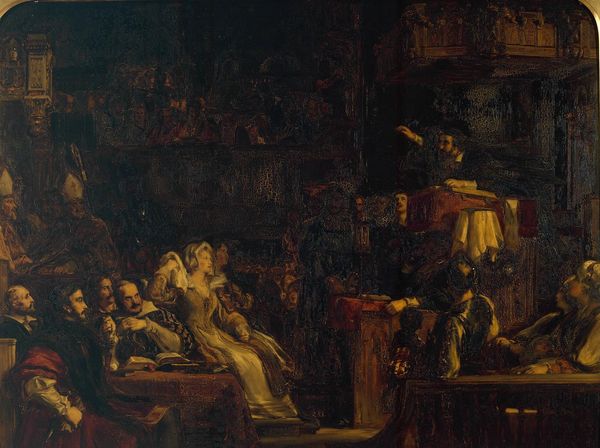
painting, oil-paint
#
portrait
#
painting
#
oil-paint
#
oil painting
#
group-portraits
#
genre-painting
#
history-painting
#
academic-art
#
realism
Dimensions: 300 x 214 cm
Copyright: Public domain
Thomas Eakins captured this striking scene with oil on canvas, immortalizing a surgical operation at Jefferson Medical College. In the late 19th century, medical education was undergoing significant changes, influenced by germ theory and antiseptic practices. The painting depicts Dr. Agnew, a prominent surgeon, lecturing during a mastectomy. The setting, with its tiered seating filled with male students, highlights the gender dynamics of the time, with the patient rendered anonymous and vulnerable. A figure of particular interest is Mary V. Clymer, the head nurse. Her inclusion marks a moment where women began to take on more visible roles in medicine. Eakins doesn't shy away from the stark realities of surgery, presenting a narrative that intersects with the social and ethical questions about medical intervention. While celebrating medical progress, the painting also evokes questions about the body, gender, and representation.
Comments
Join the conversation
Join millions of artists and users on Artera today and experience the ultimate creative platform.
artera almost 2 years ago
⋮
Master of nineteenth-century American Realism Thomas Eakins (1844-1916) had spent time studying in Paris but, unlike many of his contemporaries, he chose to return to his homeland, intent on contributing to the establishment of a distinctly American School. Committed to a scientific approach to painting that drew upon his knowledge of anatomy and physics, he sought to both accurately record the truth of what he saw and convey the psychological meaning of his subjects. Instead of a more traditionally posed portrait, in The Agnew Clinic Eakins chose to depict Dr. David Agnew, Professor of Anatomy at the University of Pennsylvania, in the context of his lecture theater, mid-operation, surrounded by his assistants, and framed by his students. Agnew stands out, a beacon of knowledge and skill, illuminated against the dull and tangled mass of flatly painted students. The scalpel in his hand, a sign of his engagement with the operation to his left, shows that this is a man of practical achievement as well as academic learning. Like the many sportsmen Eakins also chose to paint, the doctor is depicted as a new type of American hero, one whose position is based on democratic public achievement rather than social status. Typical of the artist, the painting is informed by intense observation as well as research into anatomy, perspective, and motion. His approach to painting reinvigorated Realism and paved the way for the emergence of the early twentieth-century Ashcan School.
